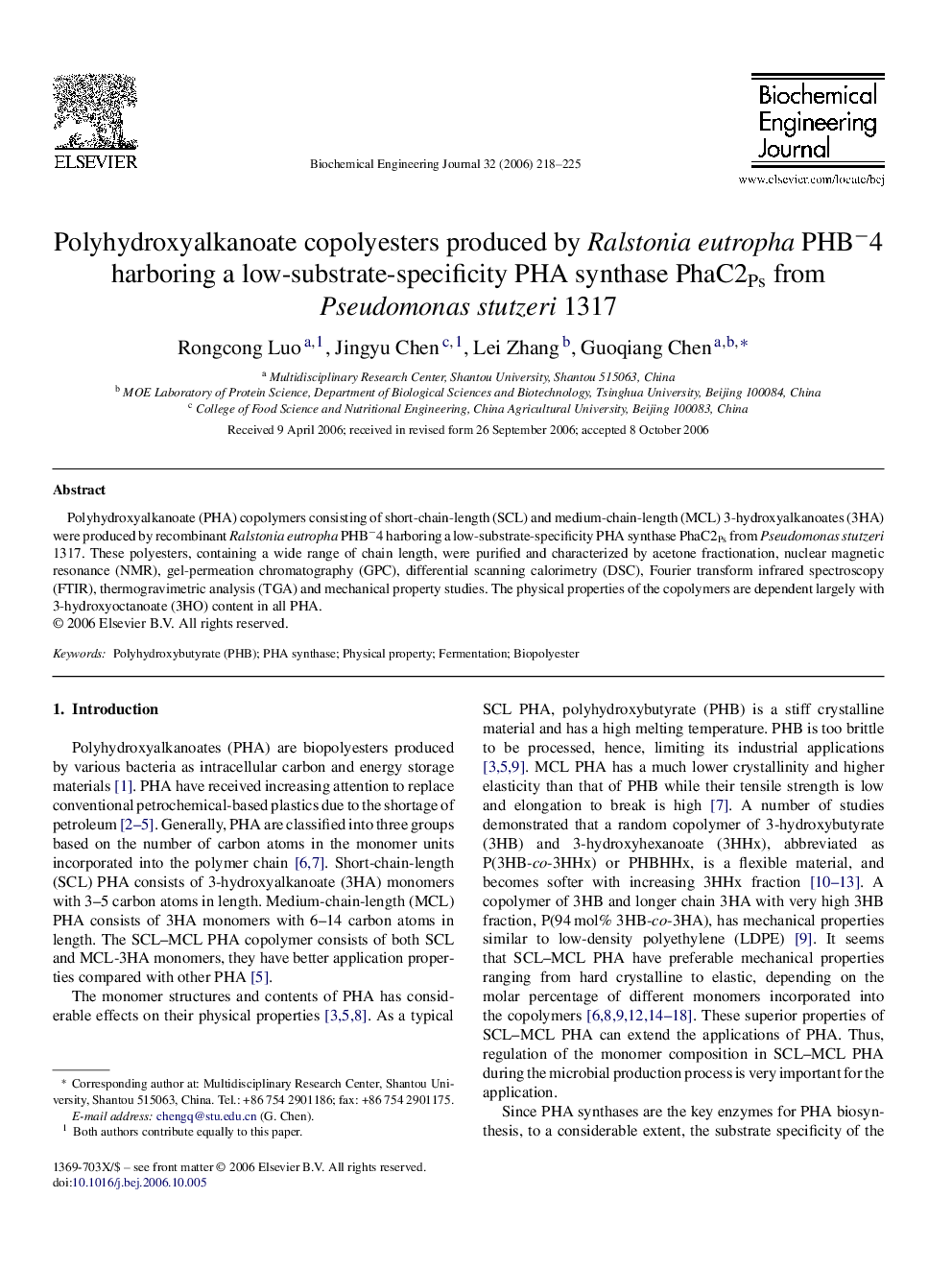| Article ID | Journal | Published Year | Pages | File Type |
|---|---|---|---|---|
| 4896 | Biochemical Engineering Journal | 2006 | 8 Pages |
Abstract
Polyhydroxyalkanoate (PHA) copolymers consisting of short-chain-length (SCL) and medium-chain-length (MCL) 3-hydroxyalkanoates (3HA) were produced by recombinant Ralstonia eutropha PHB−4 harboring a low-substrate-specificity PHA synthase PhaC2Ps from Pseudomonas stutzeri 1317. These polyesters, containing a wide range of chain length, were purified and characterized by acetone fractionation, nuclear magnetic resonance (NMR), gel-permeation chromatography (GPC), differential scanning calorimetry (DSC), Fourier transform infrared spectroscopy (FTIR), thermogravimetric analysis (TGA) and mechanical property studies. The physical properties of the copolymers are dependent largely with 3-hydroxyoctanoate (3HO) content in all PHA.
Related Topics
Physical Sciences and Engineering
Chemical Engineering
Bioengineering
Authors
Rongcong Luo, Jingyu Chen, Lei Zhang, Guoqiang Chen,
